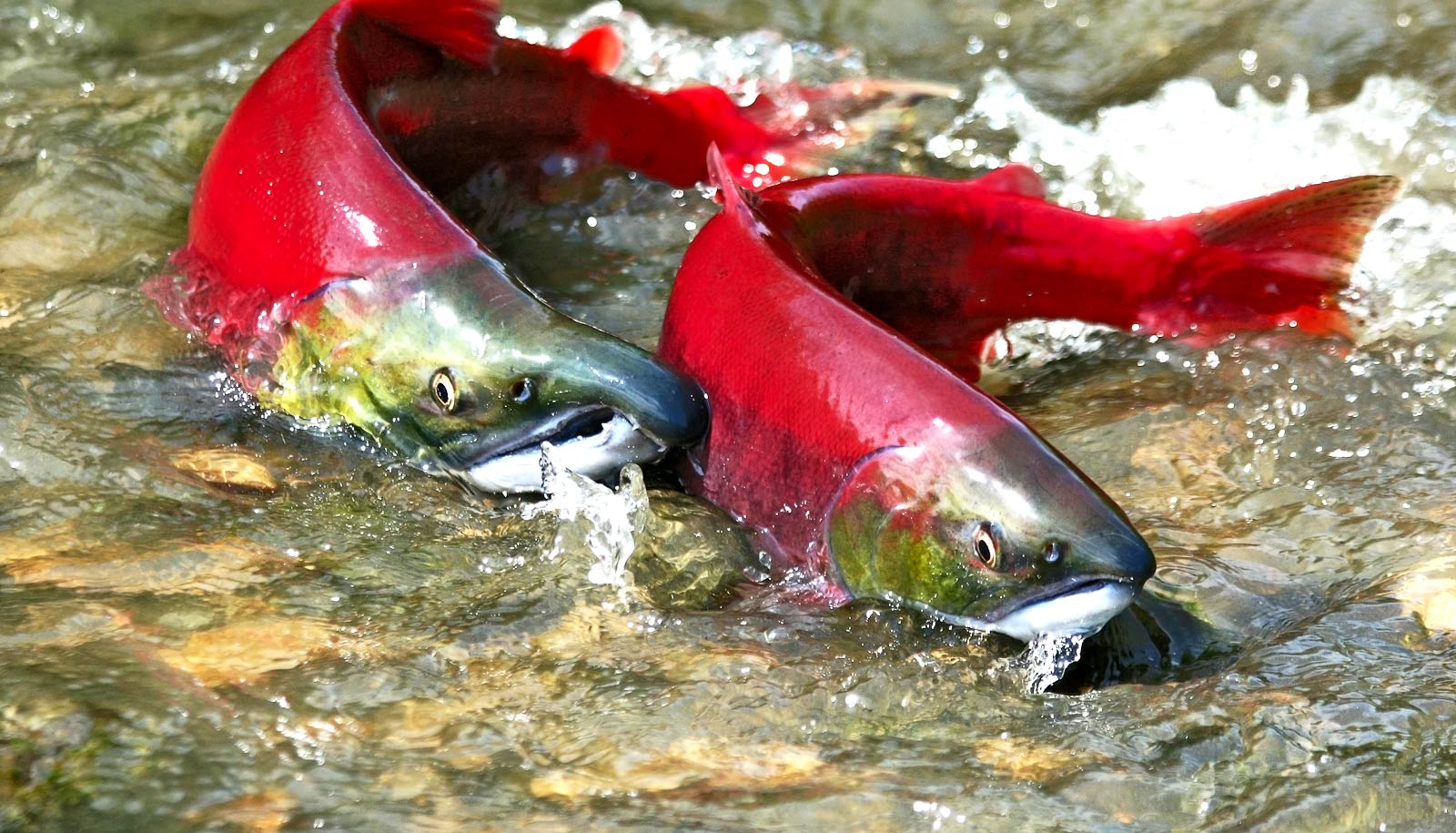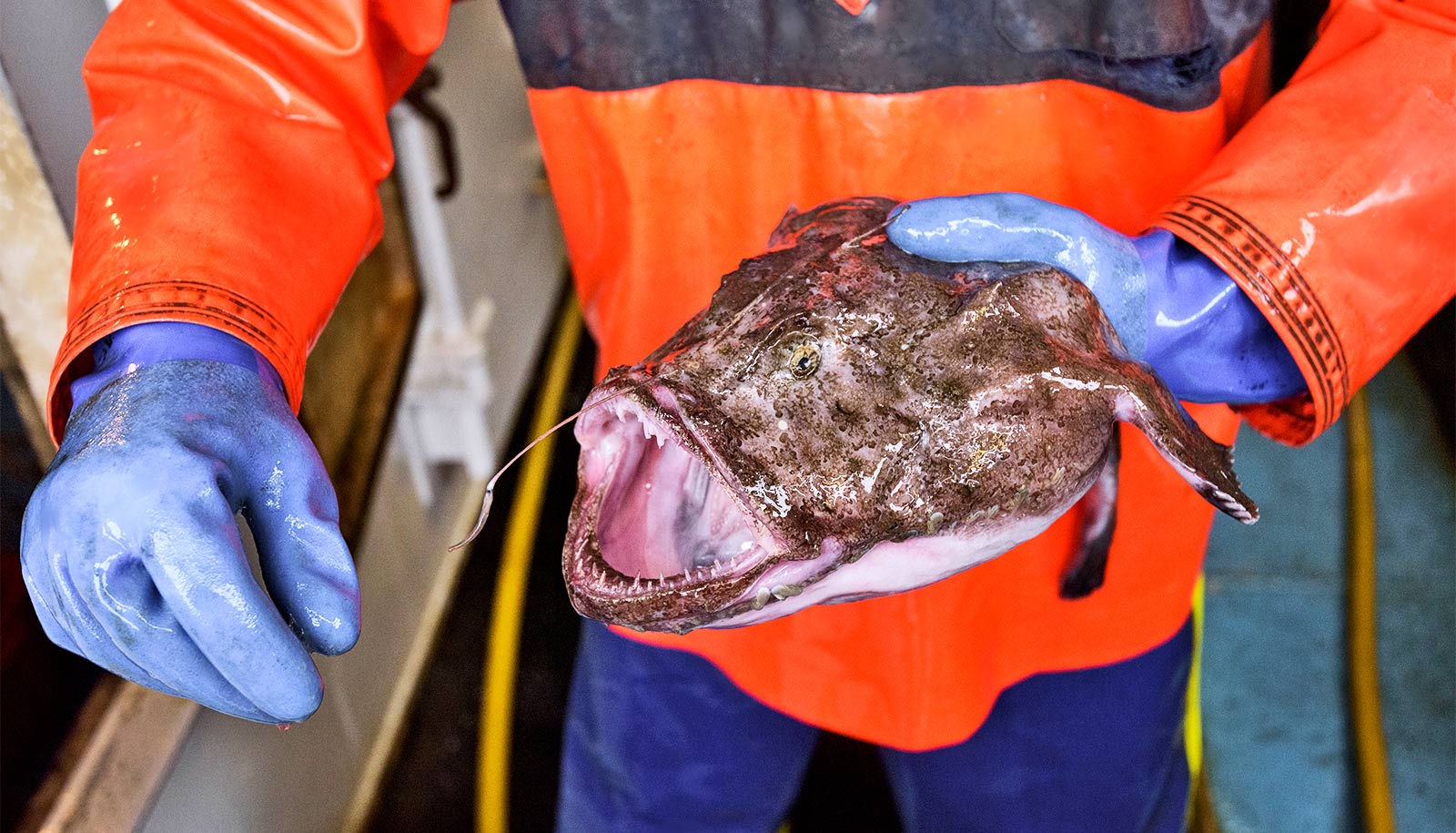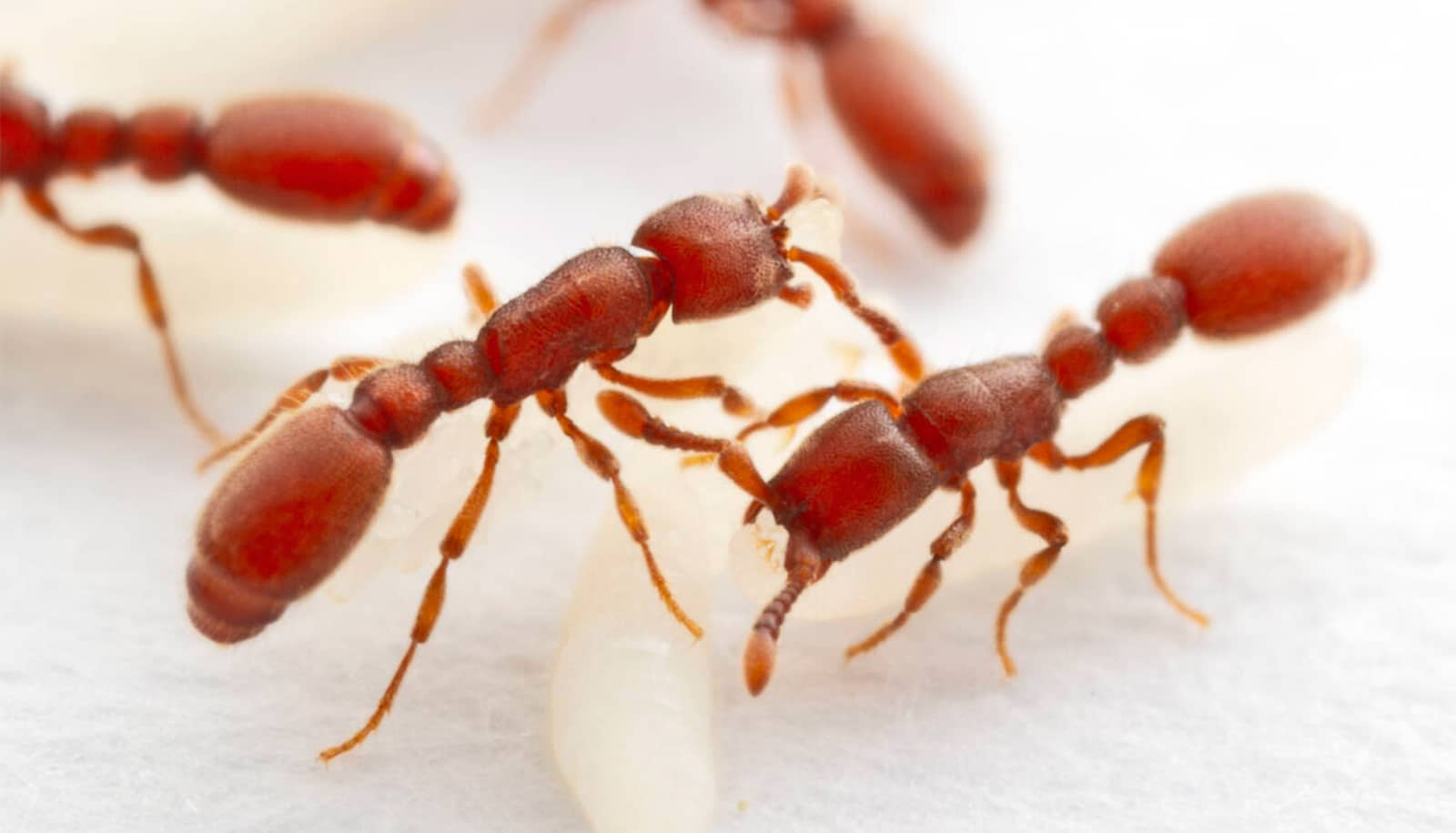Salmon play a significant role in shaping mountain landscapes, according to a new study that shows that when they spawn, the earth moves. But it only happens over the course of hundreds of thousands or even millions of years.
For a new paper in Geomorphology, Brian Yanites, an assistant professor of earth and atmospheric sciences at Indiana University, and colleagues modeled the effect of spawning salmon on riverbed erosion and calculated how it affects mountain landscapes.
Researchers combined the fact that spawning salmon stir up sediment in riverbeds and accelerate the erosion of river channels with mathematical formulations of sediment transport and erosion to show how their presence reshapes mountains and valleys.
“While the influence of salmon reproduction on sediment transport has been known, this is the first paper that has suggested the process could influence the height and shape of the landscape over long timescales and large spatial scales, such as the extent of a mountain range,” Yanites says.
And it’s not just a little bit, either. Researchers calculated that a landscape where salmon spawn could be up to 30 percent lower than a comparable landscape with no salmon present.
Salmon hatch in fresh water, live their lives in oceans, then return to rivers and streams to spawn. Female salmon turn on their sides and flap their tails to build nests, called redds, in which they lay eggs. Males then fertilize the eggs, which develop and hatch. In building the nests, the female salmon stir up sediment and help expose the riverbed, leading to more erosion nearby and downstream.
Some salmon are more potent mountain-movers than others. Different species prefer to build redds in different types of sediment, from the coarse grains found in the upper reaches of streams to the finer grains found downstream.
Chinook salmon will spawn in a wider range of grain sizes than sockeye and pink species; therefore, chinook can disrupt longer reaches of rivers and streams and have a greater impact on erosion.
Why ‘normal’ salmon don’t get as many parasites
The study suggests salmon are at the center of a cycle of the building up and wearing down of mountains. Mountains are built by tectonic processes that lift rocks to higher elevations. In the Pacific Northwest, scientists believe, mountain-building created distinct environments that led to species “radiation”—the evolution of distinct salmon species from a common ancestor.
Those species, through their spawning, contribute to erosion that wears down the very mountains that allowed the species to develop in the first place.
“More species means a wider range of grain size in which spawning can occur and therefore a greater impact on erosion,” Yanites says. “Thus we suggest that the radiation of salmon species in the Pacific Northwest may have lowered the elevation of mountains in the region.”
Alexander Fremier, an associate professor in the School of the Environment at Washington State University. Elowyn Yager, an associate professor of civil and environmental engineering at the University of Idaho, is a coauthor.
Source: Indiana University



